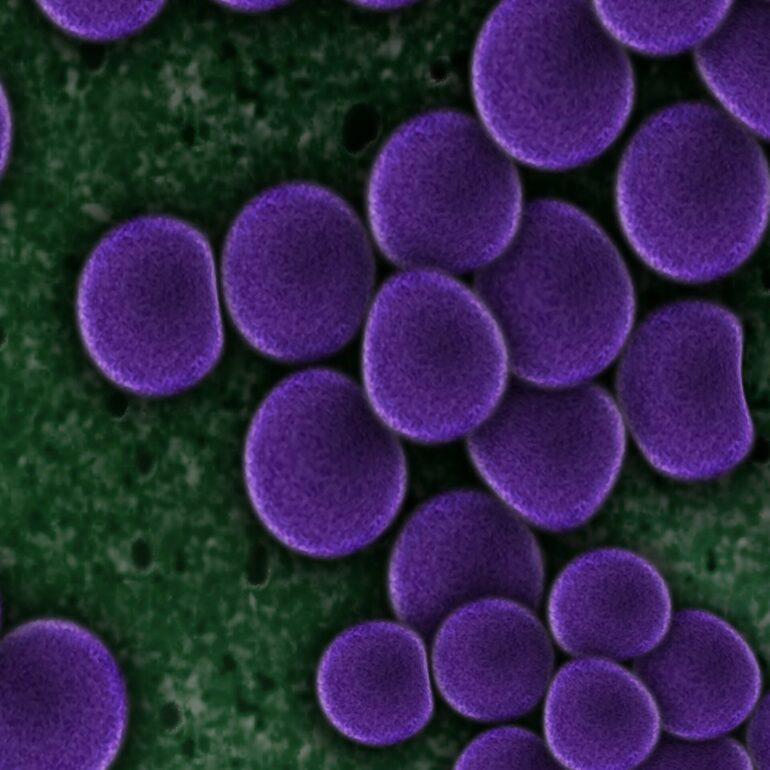Microbial communities often contain several species that coexist even though they share similar metabolic abilities. How they do so is unclear. Researchers have now developed a model to show that if these species have complementary preferences for what they consume, they can more easily coexist.
Many microbes grow diauxically—they consume the available food resources one at a time instead of simultaneously. Each species has a particular order of preferences, ranging from most preferred to least preferred. Importantly, this list differs among the different microbes. Interestingly, sugars like glucose, which should be universally prized, are not preferred by some microbes, allowing them to choose different items from the same menu.
“Although diauxic growth was discovered in the 1940s, people haven’t paid much attention to it from a modeling perspective,” said Sergei Maslov (BCXT/CABBI), a professor of bioengineering and Bliss faculty scholar. “We have this incredible zoo of microbial ecosystems that are present everywhere and people are trying to understand what allows different species to co-exist. We wanted to understand the basic assembly principles of diauxically growing communities.”
The researchers modelled the assembly of a microbial community in serial dilution cultures, where the bacteria are allowed to grow up on a fresh batch of nutrients for a certain time before they are diluted again. “Serial dilution experiments are the simplest experiments to perform in the lab and they represent the boom-and-bust scenarios in nature. For example, in the gut you may have a fresh batch of nutrients, which is used by the microbes until they run out of food. At the end of every boom cycle comes the bust cycle represented by the dilution,” Maslov said.
“Each species has a predetermined preference list that is hardwired into its DNA. What we assumed, and what is supported by experiments, is that the order of nutrient consumption is different for different species. Some may have glucose as the top choice while others use, for example, lactose. We are looking at this interplay between the diversity of nutrients and the microbe preferences,” Maslov said.
In the model, the researchers first assumed that a single species can grow on four food resources. It first grows on its most preferred resource until it runs out and then switches to the next one. After all the resources are depleted, a fraction of the bacteria is transferred to a fresh batch of resources, resulting in serial dilution. After this point, a randomly chosen second species is introduced and the researchers modelled the resulting competition and resource depletion. This process continues until no other species from the random pool can invade the community. Across many such simulations, the set of microbes in the final community tends to have complementary resource preferences i.e., their top choices are all different.
Although one might guess that the microbe’s top choice is whatever it grows on the fastest, the model has no such assumption. “Experiments have shown that there is no clear relationship between what you prefer and how fast you grow on it. However, the assembled community consists almost exclusively of microbes that grow the fastest on their top choice nutrient,” said Akshit Goyal, a postdoctoral fellow at MIT and a collaborator of the Maslov lab.
The researchers used a large pool of bacteria, which was generated randomly, for their model. Consequently, they were looking for patterns which did not depend on the identity of the bacteria. “We have created a geometric theory where you can grab your species and look at their preference lists and growth rates on different nutrients and predict the outcome of the experiment. Even without running the simulations, you can predict whether a species will survive in a particular community or not,” said Veronika Dubinkina, a Ph.D. student in the Maslov lab.
This work did not incorporate other growth factors that might affect microbial growth. “We did not consider cross feeding in our model where one bacterium produces products that the others can use. We assumed that all the species can only use the resources that are present in the beginning,” said Zihan Wang, a Ph.D. student in the Maslov lab. The researchers plan on including cross feeding into their future studies to see how it shapes the microbial community.
“We are interested in applying this model to real microbial ecosystems and we have started another project to see what happens in actual serial-dilution experiments,” Maslov said. “It’s very easy to make a big, complicated model. Our philosophy is to add one property at a time, such as diauxie or cross feeding, and understand what is going on at every step. That way you gradually get better at understanding of complex, real-world systems.”
The study “Complementary resource preferences spontaneously emerge in diauxic microbial communities” was published in Nature Communications.
More information:
Zihan Wang et al, Complementary resource preferences spontaneously emerge in diauxic microbial communities, Nature Communications (2021). DOI: 10.1038/s41467-021-27023-y
Provided by
University of Illinois at Urbana-Champaign
Citation:
How do microbes choose from a ‘menu’ of food? (2021, November 19)



